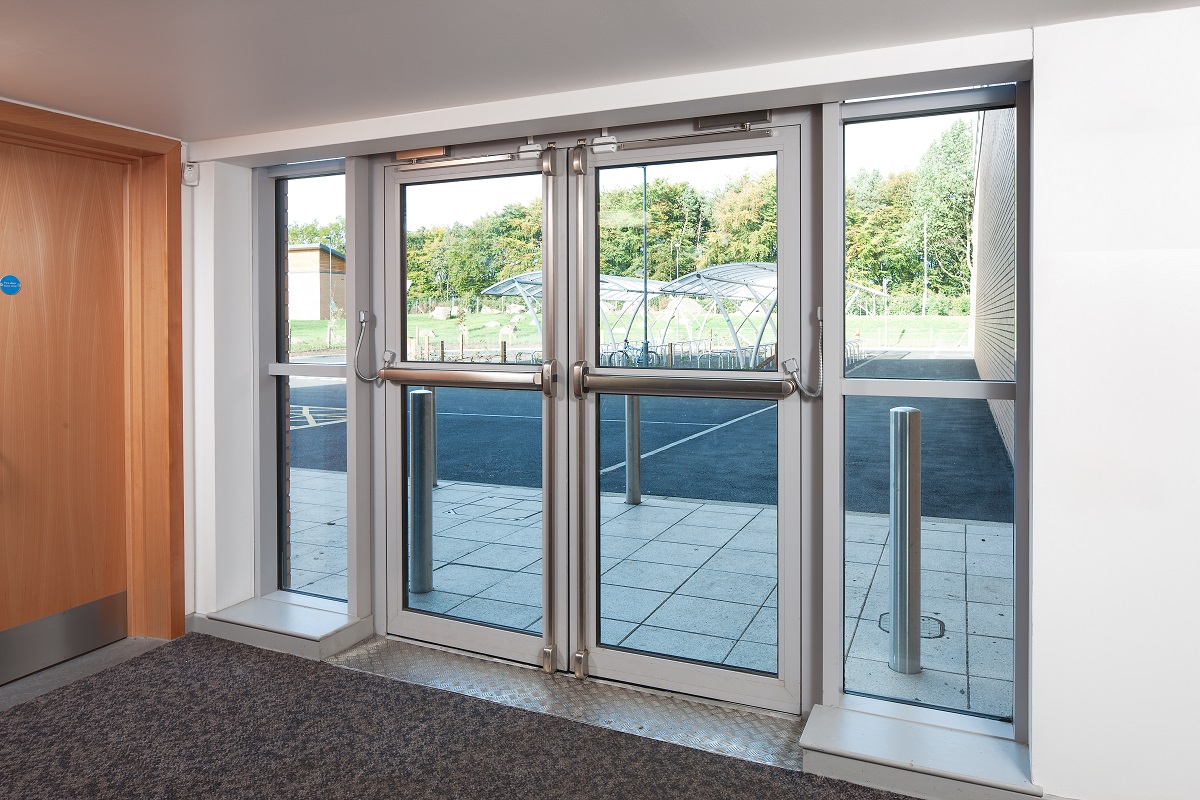Duoflex For Commercial Building Refurbishment
There is a demand for the refurbishment and reuse of commercial buildings driven by the need for smaller, flexible working spaces and alternative uses....
Read Full Article
Strand Hardware is taking the panic out of buying emergency exit solutions by outlining key considerations for specification. It urges customers to put ‘safety first’ by prioritising functionality and performance.
CE marked products for fire and escape doors are a must for architects and specifiers and best practice determines that products comply with Construction Product Regulations.
Strand Hardware’s Antipanic emergency exit and panic range meet these requirements. In an emergency or panic situation, they release exit doors by means of a push bar, touch bar or a push pad on outward opening single or double doors.
For day-to-day use, doors can be opened from the outside with an outside access device.
“When an emergency door can be locked or opened from the outside, it should still be freely released from inside – maintaining security without compromising its basic panic function.”
– Steve Marshall
Managing director, Strand Hardware
Marshall urges specifiers to identify suitable solutions by considering:
Product range – Strand Hardware offers a PH (modular push bar/push pad range), PHT (touch bar range) and PHTM (motorised touch bar range) options. Selection criteria is provided by the EN standards EN1125 and EN179 and should reflect occupancy levels. Other matters to be considered include creating clear opening requirements, how the door is intended to be used, whether it is fire resisting and the operating environment. Aesthetics and budget will also have a place but these are secondary to the life safety aspect.
Different strikes
Door/frame material and design – different strikes are used to suit various door materials and construction. For PVC-U doors and frames, a range of profile related strikes are available for which the system manufacturer and profile model is needed. Glass doors require patch fittings to suit the escape device and door construction. Whether the doors are fire-resisting and how the door is hung will also have a bearing.
Configuration of doors
Locking latch arrangement and number – single and three-point locking latches are available across all the ranges with the ability to convert on site from three point to two point in the most cases. Factors to be considered include whether the door is single or double, construction, material and size. For double doors requiring escape through both leaves, it is critical that whichever door leaf is operated it must open and whether the doors are rebated through the lock stile section/overlapping plates or are plain edged.
Getting in
Outside access – external access can be provided by a mechanical outside access device, using a key, push button digital combination and in most cases either a lever handle or knob. Again, thought needs to be given to how the door is to be used. Most electronic access control can be accommodated by use of an internal motorised touch bar.
Size matters
Size of door – door widths and heights should be checked before ordering as many wider and taller doors can be catered for from stock by use of wider crossbars, wider model touch bars and extra-long rod kits.
Materials
Finish – powder coated white and black finishes are available from stock along with the standard silver grey, which have the option of a green cross bar. A decorative plated satin stainless steel finish and simulated polished brass are available for many ranges. Where a high degree of corrosion resistance is necessary the DFine grade 316 stainless steel is available. Many other finishes can be provided to special order.
Picture: Strand Hardware supplied motorised touch bar panic devices in satin stainless-steel finish through Allgood for the Auchmuty High School project in Fife Scotland.
Article written by Cathryn Ellis
18th October 2022